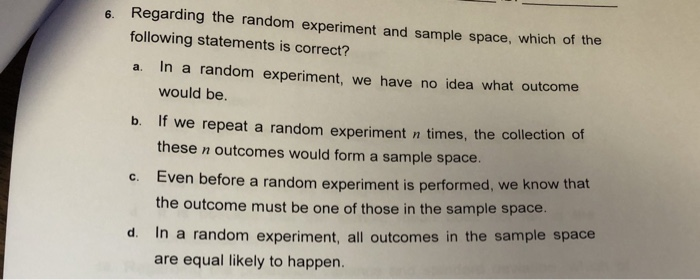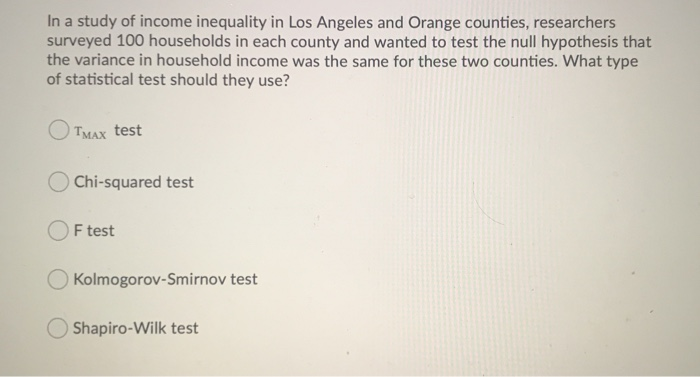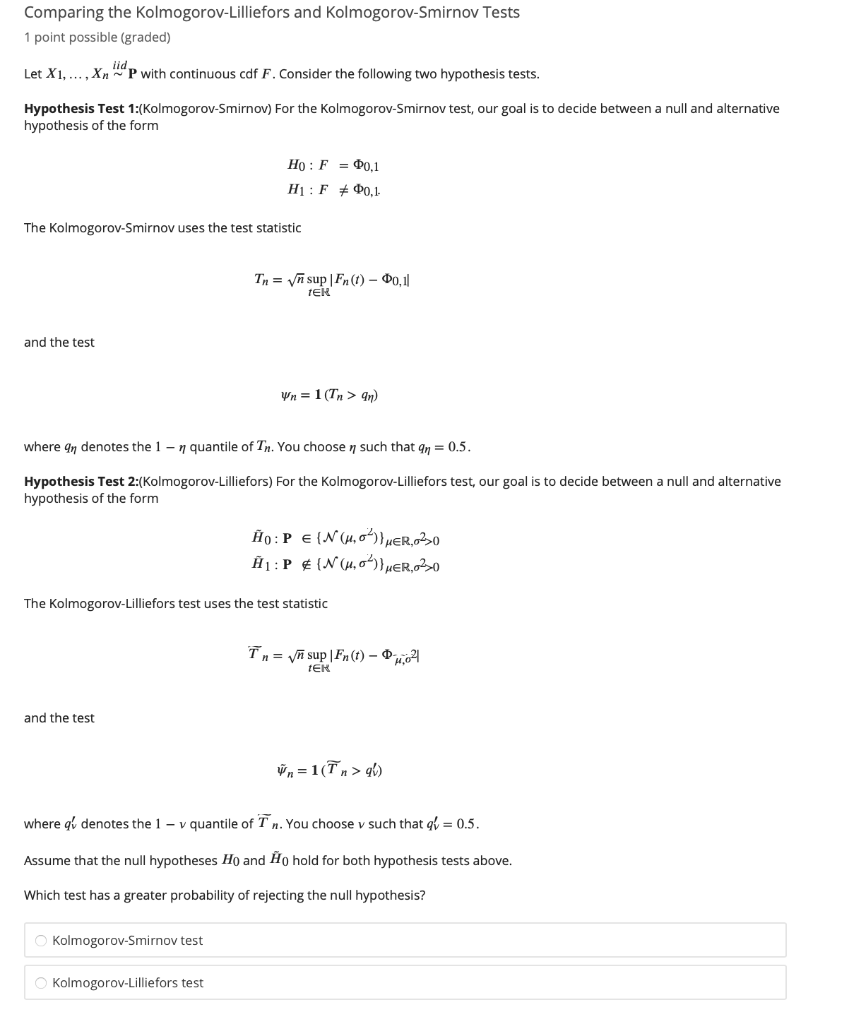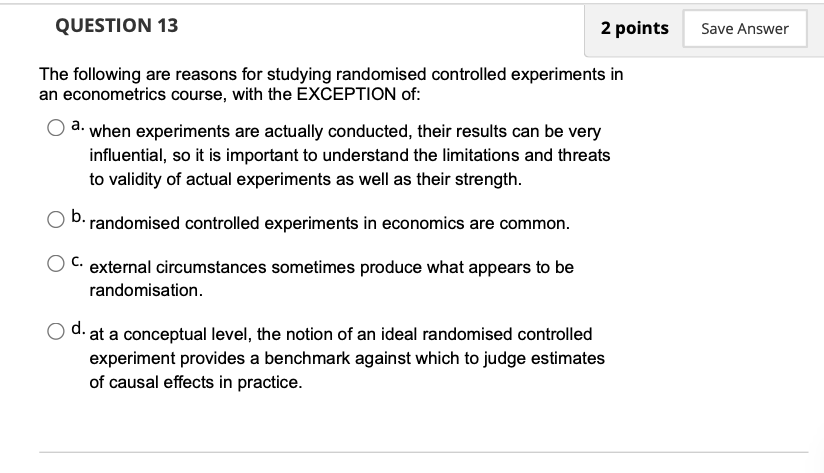6. Regarding the random experiment and sample space, which of the following statements is correct? a. In a random experiment, we have no idea what outcome would be. b. If we repeat a random experiment , times, the collection of these n outcomes would form a sample space. c. Even before a random experiment is performed, we know that the outcome must be one of those in the sample space. d. In a random experiment, all outcomes in the sample space are equal likely to happen.In a study of income inequality in Los Angeles and Orange counties, researchers surveyed 100 households in each county and wanted to test the null hypothesis that the variance in household income was the same for these two counties. What type of statistical test should they use? O TMAX test OChi-squared test OF test Kolmogorov-Smirnov test OShapiro-Wilk testComparing the Kolmogorov-Lilliefors and Kolmogorov-Smirnov Tests 1 point possible (graded) Let X1, ..., Xn ~ P with continuous cdf F. Consider the following two hypothesis tests. Hypothesis Test 1:(Kolmogorov-Smirnov) For the Kolmogorov-Smirnov test, our goal is to decide between a null and alternative hypothesis of the form Ho : F = 10,1 H1 : F # 40,1 The Kolmogorov-Smirnov uses the test statistic In = Vn sup | Fn (1) - Do, 1 and the test Wn = 1(Tn > qn) where qn denotes the 1 - 7 quantile of In. You choose , such that qn = 0.5. Hypothesis Test 2:(Kolmogorov-Lilliefors) For the Kolmogorov-Lilliefors test, our goal is to decide between a null and alternative hypothesis of the form HO: P E ( N ( 1, 0 ) ) MER, 0320 A1 : P = (N ( H, O') ) HER, 0320 The Kolmogorov-Lilliefors test uses the test statistic In = Vn sup | Fn (1) - DM,64 and the test Wn = 1(T n > qu) where qv denotes the 1 - v quantile of T n. You choose v such that of = 0.5. Assume that the null hypotheses Ho and Ho hold for both hypothesis tests above. Which test has a greater probability of rejecting the null hypothesis? O Kolmogorov-Smirnov test O Kolmogorov-Lilliefors testQUESTION 13 2 points Save Answer The following are reasons for studying randomised controlled experiments in an econometrics course, with the EXCEPTION of: O a. when experiments are actually conducted, their results can be very influential, so it is important to understand the limitations and threats to validity of actual experiments as well as their strength. O b. randomised controlled experiments in economics are common. O " external circumstances sometimes produce what appears to be randomisation. O d. at a conceptual level, the notion of an ideal randomised controlled experiment provides a benchmark against which to judge estimates of causal effects in practice










